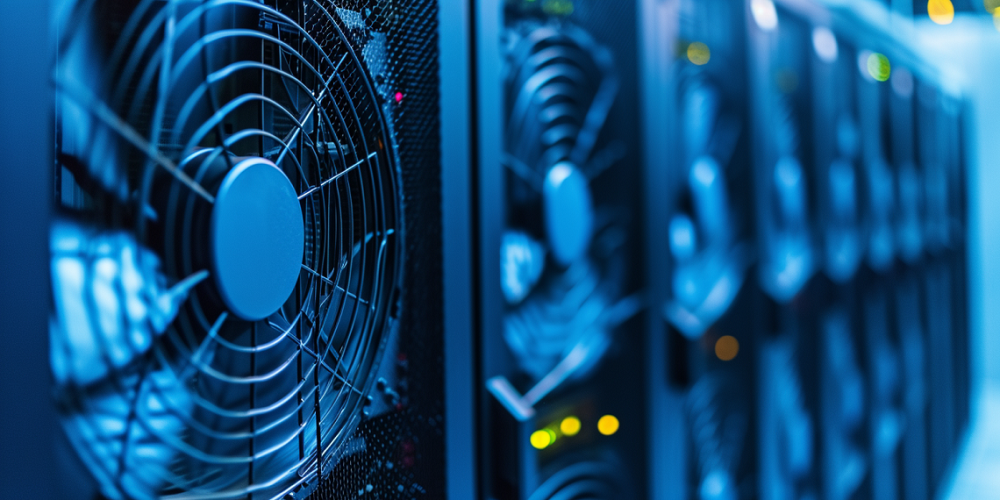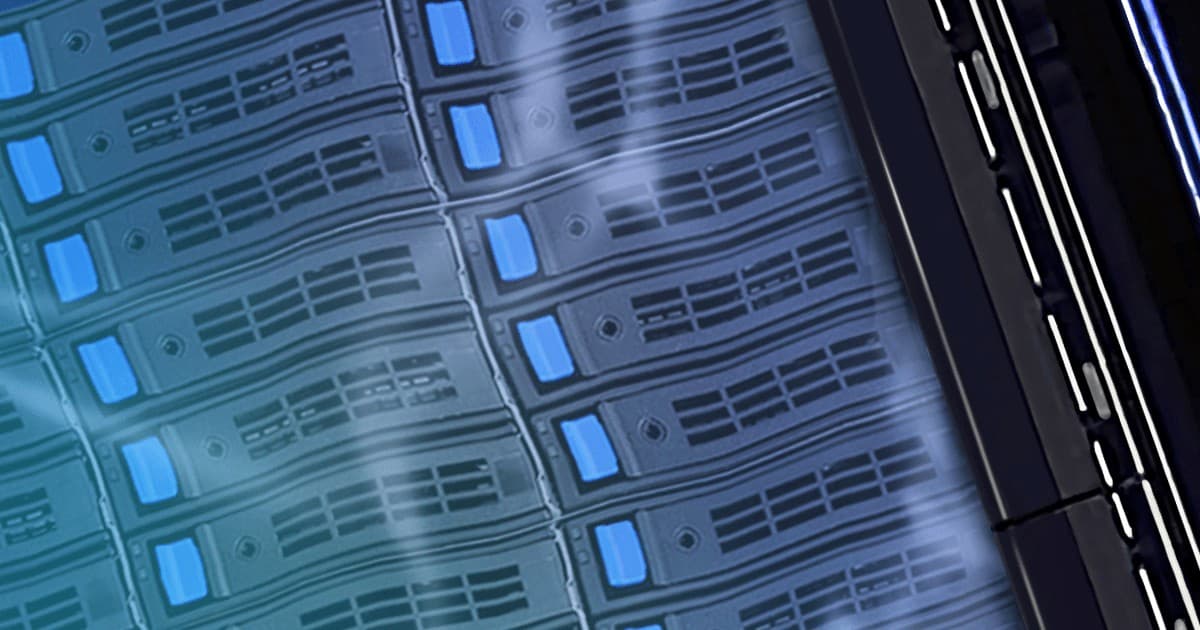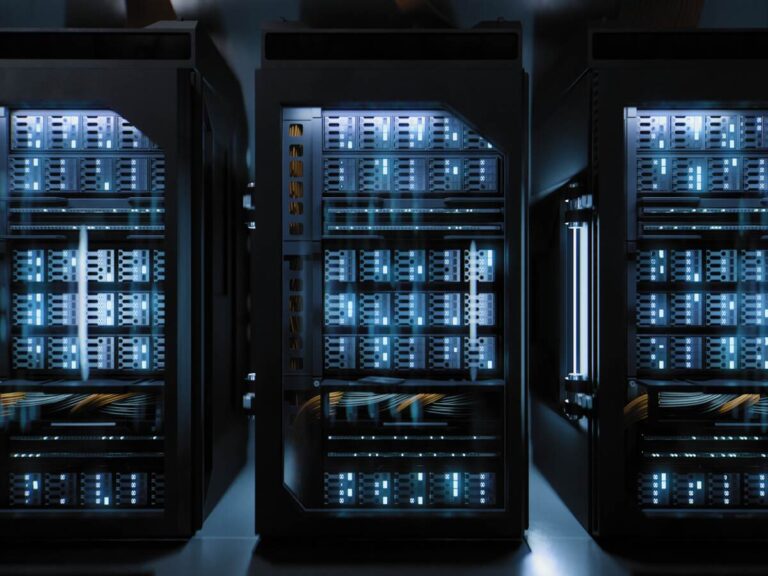In the relentless pursuit of digital prowess, the sheer power emanating from modern servers generates an equally immense challenge: heat. As computing demands skyrocket with the explosion of AI, machine learning, and high-performance computing, the density of processing units within server racks has reached unprecedented levels. This concentration of power translates directly into a formidable thermal load, making efficient server cooling technologies advancing rapidly a paramount concern for data centers globally. It’s no longer just about keeping servers from overheating; it’s about optimizing performance, reducing energy consumption, and achieving sustainability goals in an increasingly power-hungry digital world.
The evolution of server cooling is a critical, often unseen, battleground in the tech industry. Traditional air-cooling methods, once sufficient, are quickly reaching their limits. The imperative is clear: innovate or face severe performance throttling, escalating energy bills, and environmental concerns. This article will delve into the groundbreaking advancements in server cooling, exploring the myriad of technologies that are not merely keeping pace with, but actively enabling the next generation of high-density, high-performance computing, ensuring that our digital infrastructure remains cool, efficient, and sustainable.
Why Cooling is a Core Challenge

At its most fundamental, computing generates heat. Every electron moving through a circuit, every transistor switching, converts electrical energy into thermal energy. In modern servers, packed with powerful CPUs, GPUs, and high-speed memory, this heat generation is concentrated, creating significant challenges:
A. Performance Throttling: Processors are designed to slow down (thermal throttling) when they reach critical temperatures to prevent damage. Inadequate cooling directly limits server performance and efficiency.
B. Component Lifespan: Prolonged exposure to high temperatures accelerates component degradation, leading to premature failures, increased maintenance costs, and reduced server lifespan.
C. Energy Consumption: Cooling systems are typically the second-largest consumer of energy in a data center (after the IT equipment itself). Inefficient cooling drastically inflates operational costs and carbon footprint.
D. Density Limitations: The ability to pack more powerful servers and components into a given rack space is directly constrained by the effectiveness of the cooling system.
E. Reliability and Uptime: Overheating is a common cause of server crashes and unexpected downtime, which can be catastrophic for businesses relying on continuous operations.
The increasing power density within server racks, driven by innovations in processor technology and the demands of AI, means that every watt of dissipated heat must be managed with extreme precision. This has forced a radical rethink of traditional cooling methodologies.
The Evolution of Cooling
Server cooling has come a long way from simply blowing air over components. The advancements reflect a continuous push for greater efficiency and heat absorption capacity.
A. Air Cooling:
While still prevalent, traditional air cooling is facing significant challenges with increasing power densities.
- Hot/Cold Aisle Containment:
- Mechanism: This foundational efficiency technique physically separates the hot exhaust air from servers in “hot aisles” from the cold intake air in “cold aisles.” By preventing air mixing, cooling systems can deliver colder air more directly to server inlets and remove hotter air more efficiently.
- Benefits: Reduces energy waste from mixing air, allows cooling units to operate at higher temperatures (saving energy), and improves airflow predictability.
- Computer Room Air Conditioners (CRACs) & Air Handlers (CRAHs):
- Mechanism: CRAC units cool and dehumidify air (like a giant air conditioner), while CRAH units use chilled water to cool air without dehumidification. They push cooled air into the cold aisles.
- Limitations: Less efficient as server power densities increase. Air is a poor conductor of heat compared to liquid, making it less effective for high-wattage components.
- In-Row Cooling:
- Mechanism: Instead of large perimeter CRACs, cooling units are placed directly in the server row, closer to the heat source.
- Benefits: Reduces the distance air needs to travel, leading to more efficient cooling for higher density racks than traditional room-level air conditioning.
B. Liquid Cooling:
Liquid cooling is rapidly becoming the standard for managing the extreme heat loads of modern, high-performance servers, especially those equipped with multiple GPUs and specialized AI accelerators.
- Direct-to-Chip (Cold Plate) Liquid Cooling:
- Mechanism: Chilled liquid (often water or a specialized coolant) flows through sealed cold plates mounted directly on top of the hottest components, such as CPUs, GPUs, and memory modules. Heat is transferred directly from the component to the liquid.
- Benefits: Extremely efficient at removing concentrated heat, as liquid has a much higher thermal conductivity than air. Allows for significantly higher server densities and component power. Can reduce overall data center cooling energy consumption by 20-50% compared to air. The heated liquid can also be at a higher temperature, making it easier to reuse.
- Deployment: Often used in hybrid systems where liquid cools the hottest components, and air still cools other parts of the server.
- Immersion Cooling:
- Mechanism:
- Single-Phase Immersion: Server components or entire servers are submerged in a non-conductive, dielectric fluid (e.g., mineral oil, synthetic fluids) that never changes state (remains liquid). The fluid circulates through a heat exchanger to dissipate the heat.
- Two-Phase Immersion: Servers are submerged in a dielectric fluid that has a very low boiling point. As components heat up, the fluid boils, turning into a gas. The gas rises, condenses on a cold plate (heat exchanger) at the top of the tank, and then rains back down as liquid. This phase change is extremely efficient at transferring heat.
- Benefits: Unparalleled cooling efficiency, allowing for extreme server densities (e.g., 5-10x denser than air-cooled). Eliminates the need for traditional CRACs and fans within servers, reducing noise and power consumption for air circulation. Extends component lifespan due to stable temperatures. Can even be deployed without traditional server racks.
- Challenges: Requires specialized, expensive dielectric fluids and infrastructure. Maintenance procedures are different from air-cooled systems.
- Mechanism:
- Rear Door Heat Exchangers (RDHx):
- Mechanism: These are heat exchangers mounted directly onto the rear doors of server racks. Hot air exiting the servers is immediately captured and cooled by chilled water flowing through the RDHx coils, preventing it from mixing with the room air.
- Benefits: Highly effective for capturing exhaust heat from high-density racks. Can handle up to 30-40kW per rack, significantly improving cooling efficiency within a traditional data center layout.
C. Free Cooling and Economizers:
Leveraging external environmental conditions to reduce reliance on mechanical refrigeration.
- Air-Side Economizers:
- Mechanism: In regions with cool, dry climates, these systems bring filtered, cool outside air directly into the data center to cool servers when conditions are favorable, expelling hot internal air.
- Benefits: Can drastically reduce or eliminate the need for mechanical chillers for significant portions of the year, leading to massive energy savings.
- Water-Side Economizers:
- Mechanism: Uses cool water from external sources (e.g., rivers, lakes, dedicated cooling towers) in a heat exchange system to cool the data center’s internal chilled water loop, bypassing the energy-intensive chillers.
- Benefits: Similar energy savings to air-side economizers, but often more applicable in diverse climates or where water sources are available.
- Evaporative Cooling (Indirect/Direct):
- Mechanism:
- Direct Evaporative: Air passes through water-soaked pads, and as water evaporates, it cools the air (like a swamp cooler). This cooled air then enters the data center.
- Indirect Evaporative: Cools the internal air stream without adding humidity by using a heat exchanger that leverages evaporatively cooled outside air.
- Benefits: Highly energy-efficient, especially in dry climates, consuming much less power than compressor-based cooling.
- Mechanism:
Smart Cooling

Beyond physical technologies, intelligent software plays a crucial role in optimizing cooling.
A. Computational Fluid Dynamics (CFD) Modeling:
- Predictive Airflow Analysis: CFD software is used during the design phase of data centers to simulate airflow, heat distribution, and pressure gradients. This helps identify potential hotspots, optimize CRAC/CRAH placement, and refine hot/cold aisle containment strategies before construction.
- Real-time Optimization: Advanced CFD can be integrated with real-time sensor data to dynamically predict thermal behavior and inform automated adjustments to cooling systems.
B. Artificial Intelligence (AI) and Machine Learning (ML) for AIOps:
- Predictive Cooling: AI algorithms analyze vast streams of operational data (temperature, humidity, IT load, fan speeds, external weather) to predict cooling needs. This allows cooling systems to dynamically adjust their output (e.g., increasing fan speed or chiller output) proactively, anticipating demand shifts before they become critical.
- Real-Time Optimization: AI continuously fine-tunes cooling parameters (e.g., raising target temperatures slightly, adjusting airflow) to maximize efficiency without compromising performance or creating hotspots. Google’s use of AI to optimize its data center cooling has reportedly led to significant energy savings.
- Anomaly Detection: AI can detect subtle anomalies in cooling system behavior that might indicate impending failures, enabling proactive maintenance and preventing costly downtime.
C. Data Center Infrastructure Management (DCIM) Software:
- Centralized Monitoring: DCIM platforms provide a unified view of all data center assets, including power, cooling, and IT equipment. They collect data from sensors and power meters.
- Resource Management: DCIM helps manage capacity, track energy usage (PUE, WUE), and identify areas for efficiency improvement.
- Integration with IT Workloads: Some DCIM solutions integrate with IT workload management to understand the heat generated by specific applications, allowing for more intelligent placement and cooling strategies.
The Impact for Performance, Cost, and Sustainability
The rapid advancements in server cooling technologies are having a transformative impact across multiple dimensions.
A. Enhanced Server Performance and Density:
- Reduced Throttling: More effective cooling allows CPUs and GPUs to operate at their maximum clock speeds without thermal throttling, delivering consistent peak performance.
- Higher Rack Densities: The ability to dissipate more heat per square foot enables data centers to pack more powerful servers and components into existing space, maximizing real estate utilization. This is critical for AI/HPC clusters.
B. Significant Energy Cost Reduction:
- Lower PUE: Advanced cooling techniques (especially liquid cooling and free cooling) dramatically reduce the Power Usage Effectiveness (PUE) of data centers, meaning a much higher percentage of electricity goes directly to IT equipment, not waste heat.
- Reduced OpEx: Lower energy consumption for cooling directly translates into massive savings on electricity bills, which are a major component of data center operational expenditure.
C. Improved Sustainability and Reduced Environmental Footprint:
- Lower Carbon Emissions: Reducing energy consumption for cooling, coupled with the increasing adoption of renewable energy sources, significantly reduces the carbon footprint of data centers.
- Water Conservation: While some liquid cooling methods consume water, many closed-loop systems and innovations in water management aim to minimize overall water usage.
- Support for Green IT Initiatives: Advanced cooling is a cornerstone of corporate sustainability goals and aligns with global efforts to combat climate change.
D. Increased Reliability and Uptime:
- Fewer Hardware Failures: Maintaining optimal and stable operating temperatures for server components extends their lifespan and reduces the likelihood of heat-related failures.
- Reduced Downtime: Proactive monitoring, predictive analytics, and resilient cooling systems minimize unexpected outages caused by thermal issues.
The Future Horizon
The journey of server cooling is dynamic, with continuous research and innovation on the horizon.
A. Next-Generation Liquid Cooling Evolution:
- Standardization of Immersion Cooling: As immersion cooling gains traction, standards for fluids, server design for immersion, and maintenance procedures will become more established, fostering wider adoption.
- Microfluidics and Chip-Level Cooling: Integrating microscopic fluid channels directly into server chips for ultra-efficient, localized cooling at the individual die level.
- Active Refrigeration within Racks: Incorporating compact, highly efficient refrigeration units directly into server racks to handle extreme heat loads without relying on external chillers.
B. Energy Harvesting from Waste Heat:
- Thermoelectric Generators: Research into converting server waste heat directly into usable electricity using thermoelectric generators.
- Heat Reuse Beyond HVAC: Expanding initiatives to capture and reuse server waste heat for more diverse applications, such as power generation, agricultural heating (e.g., greenhouses), or industrial processes.
C. AI-Driven Thermal Management Dominance:
- Self-Optimizing Data Centers: AI will manage not just cooling, but the entire thermal and power ecosystem of a data center, dynamically allocating workloads to the coolest spots, predicting energy demand, and adapting to real-time conditions with extreme precision.
- Digital Twins: Creating highly accurate “digital twins” of data centers to simulate thermal behavior, test cooling strategies virtually, and optimize operations without impacting live systems.
D. Advanced Materials and Phase Change Materials (PCMs):
- Smart Materials: Developing new materials for heat sinks and thermal interfaces that are more efficient at conducting and dissipating heat.
- Phase Change Materials (PCMs): Utilizing materials that absorb and release large amounts of latent heat as they change phase (e.g., from solid to liquid) to help regulate server temperatures, especially during peak loads or power fluctuations.
E. Zero-Energy and Carbon-Negative Data Centers:
- Renewable Energy Integration: The long-term vision includes data centers that are fully powered by renewable energy and potentially even become carbon-negative by capturing more carbon than they emit.
- Coastal and Underwater Data Centers: Exploring radical concepts like deploying data centers in cold ocean environments to leverage natural water cooling more effectively.
Challenges and Considerations
Despite the exciting advancements, the path to universally optimized server cooling faces significant hurdles.
A. Initial Investment Costs:
Implementing advanced liquid cooling solutions or building data centers optimized for free cooling often requires substantial upfront capital expenditure.
B. Retrofitting Legacy Infrastructure:
Upgrading older, air-cooled data centers to support modern liquid cooling technologies can be complex, disruptive, and costly.
C. Complexity of Operations:
Managing and maintaining advanced liquid cooling systems, especially those involving specialized fluids or two-phase immersion, requires new skills and operational procedures.
D. Standardization and Interoperability:
The liquid cooling market is still evolving, and a lack of universal standards can lead to vendor-specific solutions, potentially hindering interoperability and broader adoption.
E. Water Usage (for certain methods):
While efficient, some evaporative or open-loop water-cooling methods can consume significant amounts of water, posing a challenge in water-stressed regions.
Conclusion
The server cooling technologies advancing rapidly are the unsung heroes of the digital age, quietly enabling the immense computational power that defines our modern world. From sophisticated hot/cold aisle containment to revolutionary liquid immersion and AI-driven optimization, the innovations in this field are crucial for unlocking the full potential of high-density, high-performance servers. This relentless pursuit of thermal efficiency is not just about keeping machines from overheating; it’s about reducing astronomical energy costs, minimizing environmental impact, and ensuring the unwavering reliability of our digital infrastructure. As the demands for AI and ubiquitous computing continue to escalate, the ongoing evolution of server cooling will remain at the forefront, cooling the path to a future where digital progress is both powerful and profoundly sustainable.



